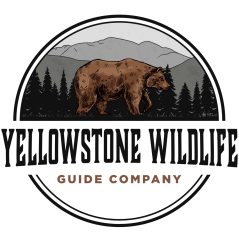Quick Details
Group of 1 - 2
$ 950
Group of 3
$ 1,000
Group of 4
$ 1,050
Group of 5
$ 1,100
Group of 6
$ 1,150
Full day wildlife tour of Yellowstone National Park
About
Get into the park early for a full day of watching wildlife in Yellowstone National Park. This tour specializes in viewing and learning about Yellowstone’s array of native flora and fauna, including bears, wolves, bison and elk. We love special requests, and look forward to making your day exactly what you desire!
What to Bring
For every tour, year round we recommend the following items.
- Reusable Water Bottle
- Your park pass (receipt, or annual/lifetime pass)
- Sunglasses
- Medications & Sunscreen
- Camera (Spare batteries, and memory cards are recommended)
- Inquire about lens recommendations
- Warm jacket (Yes, even in the summer)
- Rain jacket
- Gloves and Hat (We recommend a ball cap for sun protection and a beanie to cover the ears)
Spring (April, May, June)
Spring in Yellowstone can feel like winter in many other places. However usually by afternoon the temps are rising and sun is kissing the newest greens on the valley bottoms. For us that means being prepared for just about any type of weather and being ready for it to change quickly. We highly recommend dressing for colder temps in the morning and using a layering system to help adjust to the warming later in the day. This is also a fairly wet time of year in Yellowstone so having water resistant shoes will help keep feet warm and a waterproof rain jacket is a must!
Guides Choice:
Hiking Boots with thick pair of warm wool socks. Thin merino long johns with a thicker windproof pair of hiking pants. A thin merino base layer shirt covered by a lightweight sun hoodie (synthetic material), a light puffy jacket, ball cap and sunglasses. As always a thicker puffy jacket, rain jacket, beanie and gloves can be left in the vehicle at the ready.
Summer (July, August)
Summer in Yellowstone is an amazing time to visit. Expect cool mornings, warm afternoons and a pleasant breeze. This is probably the greatest factor in making the most popular time to visit the park. Its typical for us to see sunrise temps around freezing which quickly give way to powerful sun and beautiful picnic weather. Later in the summer afternoon thunderstorms occasionally blow through and cool the air just in time for dinner and a campfire.
Guides Choice:
Hiking boots with thin merino socks. Wind-proof hiking pants and a merino base layer with a sun hoodie. A ball cap and sunglasses are a must! The lightweight puffy is usually enough to get through the colder mornings and is often retired shortly after the sun breaks the horizon.
Fall (August, September, October)
Fall is one of our favorite seasons here in the park with a cool dry breeze, the crunchy ground beneath our boots and plenty of sunshine. Mornings are typically frosty and most days are sunny and warm enough to shed the jacket by the mid-day. However, winter is always creeping into the days this time of year and snow flurries are not uncommon starting in September. Again, layering is key.
Guides Choice:
Hiking Boots with thick pair of warm wool socks. Thin merino long johns with a thicker windproof pair of hiking pants. A thin merino base layer shirt covered by a lightweight sun hoodie (synthetic material), a light puffy jacket, ball cap and sunglasses. As always a thicker puffy jacket, rain jacket, beanie and gloves can be left in the vehicle at the ready.
Winter
Winters in Yellowstone can be legendary. Potential snowpack over your head, temperature drops well below 0 and air so cold the moistures falls like diamonds in a haze around us. With all that in mind, it’s exactly what many visitors come for. Wildlife sightings are world class and the hustle of the summer transfers into the season of the wolves. Being prepared for the cold is imperative but not impossible and when ready Yellowstone provides her hearty visitors with a stunning winter wonderland. The heaviest of insulating layers should always be at hand along with durable insulated boots and all the accessories for head and hands available. With all this preparation making sure guests are warm and comfortable is a full time job during the winter and one we have learned some solid strategies for. Warm drinks, hand warmers and a comfortable touring vehicle ready to be converted into a warming hut are always nearby.
Guides Choice:
Warm insulated ankle high boots with a thin merino sock layer under the thickest merino socks available. We also recommend gaiters this time of year if you have them to prevent snow from getting into your boots and one more layer of protection for the feet. Heavy merino long johns under a layer of thick fleece or puffy pants and wind and waterproof hiking pants. Again, merino or thick wool baselayers work best with a heavy wool or fleece layer under a heavy puffy jacket. During the coldest mornings a thin puffy jacket under the thicker one is also recommended. Finally, a warm beanie, sunglasses and gloves that are easily put on and off are a must. We also provide hand warmers to put in pockets for that extra warming kick when fingers need it.
